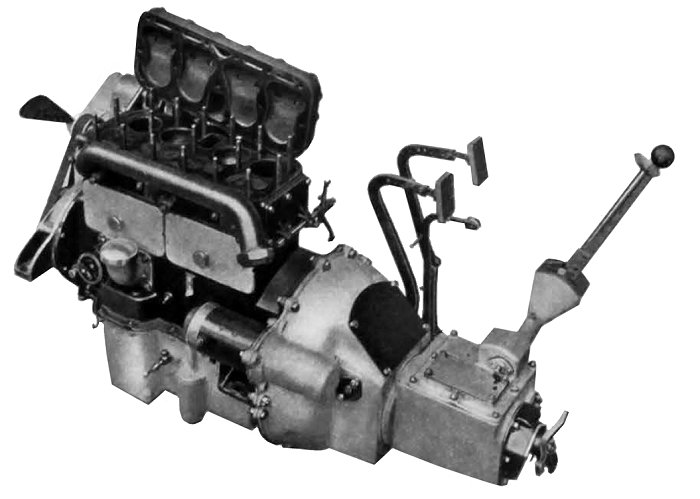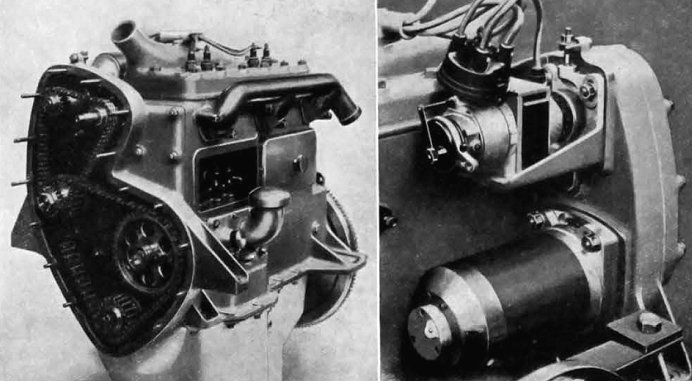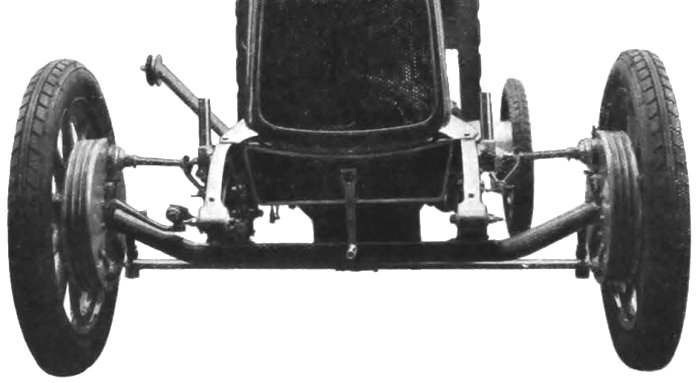|
An article from 'The
Engineer', 9th November, 1923: |
| A newcomer amongst the less expensive cars which
impressed us very favourably is the 14 horsepower Bean,
made by A. Harper, Sons and Bean, Limited, Dudley. In
both design and construction the 14 horsepower chassis
is a great advance over the firm’s previous machines,
and represents wonderful value, even in these days of
keen competition. |
|

The chassis of the 14hp. Bean
car. |
| The engine is of the four-cylinder monobloc
pattern, with a detachable head, its chief
dimensions being 75mm bore by 135mm stroke, and
operated by a three-bearing crankshaft; the valves
are interchangeable. The camshaft is operated from
the crankshaft by an adjustable silent chain, which
also drives a sprocket on the end of the dynamo
shaft. A second and smaller sprocket on the latter
serves to drive the fan and magneto, a Herner
coupling being provided for adjusting the timing of
the magneto, while for regulating the tension on
this chain the magneto is carried in a cradle
secured by studs and slots to permit movement. The
induction manifold is integral with the cylinder
block and is water-jacketed. The crankshaft is
carried on three bearings, and is balanced. |
|

The engine, gearbox, and
clutch unit. |
| The engine is lubricated under pressure by a
gear wheel pump, driven by spiral gears from the
camshaft. The pump is enclosed in a filter in the
sump which forms the lower half of the crankcase and
delivers oil through the hollow crankshaft to the
main and big end bearings and camshaft, the oil
pressure being adjustable by a regulator valve.
Superfluous oil from this valve is fed direct to the
timing chain and then drains back to the sump. |
|

The timing drive, and the
magneto and dynamo. |
| The Delco-Remy coil ignition system can be
fitted in addition, if desired. The gearbox provided
four forward road speeds and a reverse, the power
being transmitted to the axle by a tubular propeller
shaft fitted at either end with a universal joint of
the sliding block type. The clutch consists of five
steel plates, three of which are covered with Ferodo
and run dry. There is an adjustable spring loaded
clutch brake fitted to ensure silent gear changing.
The final transmission is by spiral gears of
substantial dimensions, and the differential is of
the bevel type. The rear axle is of the
three-quarter floating type, the wheel hubs being
carried on large ball journal bearings. |
|

The front view of the chassis,
showing the brakes. |
|
The car is fitted with four
brakes on the Perrot system, and the view of the
front of the car shows that the axle has been
specially designed to withstand the stresses imposed
by front wheel brakes. The engine is capable of
developing over 40 horsepower on the brake. |
 |
Return to
the list
of manufacturers |
|